Auto Loans
Affordability
Loan Payment Options
Biweekly Payments
Compare Rate & Term
Rebate vs Low Interest
Home Equity Loans
Lease or Buy
 Bike Payment Calculator
Bike Payment CalculatorUse this calculator to quickly estimate the monthly payments on a motorcycle loan. Enter the amount borrowed, any application fees, the loan term & interest rate charged on the loan. This calculator defaults to monthly payments though you can change to using an alternate payment frequency. There are also options to add sales tax, trad ins and rebates to your calculation. The affordability calculator in the second tab allows you to estimate an affordable vehicle price based on your current savings and monthly budget.
Authored by Jose Abuyuan on May 25, 2020
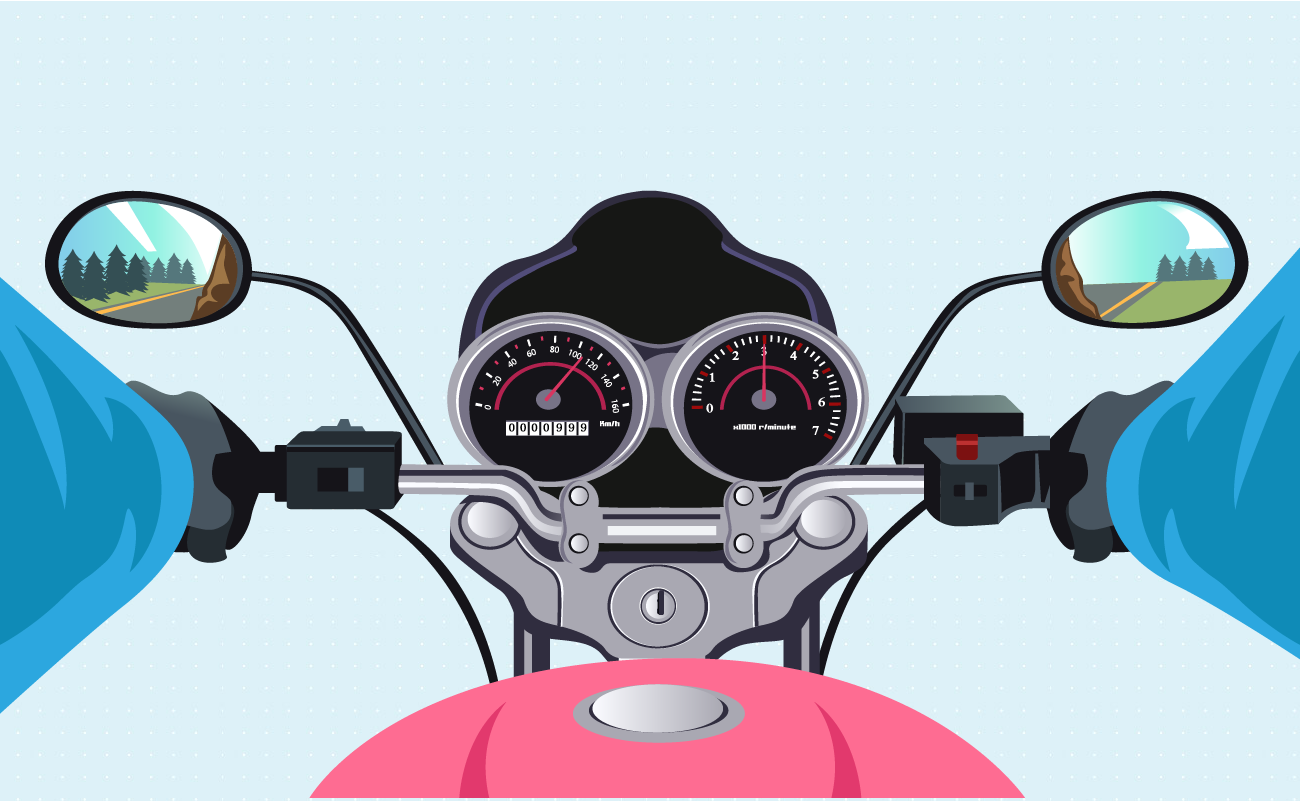
Many enthusiasts enjoy motorcycling for the camaraderie of biking groups and its adventurous culture. It calls to mind the image of a rugged American on a black chopper riding through the open road.
But apart from the passion of riding big bikes, people purchase motorcycles for many different reasons. Some ride them for fuel efficiency, the ability to move through traffic, and the ease of finding parking space.
Others ride motorbikes because they are eco-friendly. Motorcycles emit lower fossil fuels with 30 percent less carbon dioxide than cars. On the other hand, drivers who like to compete in racing also engage in professional biking activities. Whatever your reasons, there's bound to be a motorcycle that suits your needs.
In this guide, we'll walk you through the different types of motorcycles, common brands, and their estimated price range. We'll also talk about when to purchase a new or used motorbike, maintenance, and average motorcycle costs compared to driving a car. Finally, we'll talk about precautions you should take before riding in the winter.
There is a staggering assortment of motorcycles available on the market. Even if you think you know what kind you want, it pays to check out other types of units that better fit the bill. Whether you're new to motorcycling or looking to upgrade your current unit, below is a detailed list of different motorcycles and popular brands:
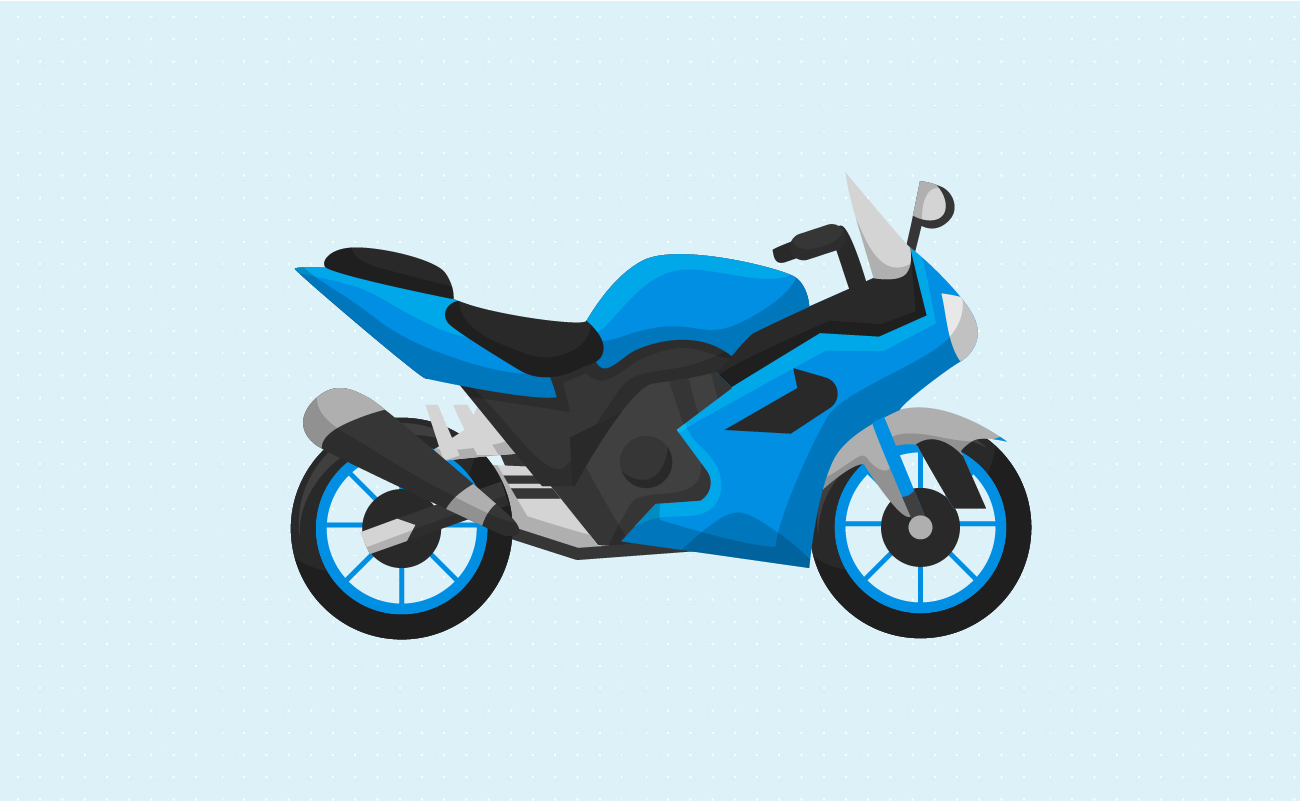
Standard motorcycles are the ideal beginner's bike. It is the oldest motorcycle style that's been manufactured for decades, which integrates an upright seat and handlebars that are fitted a comfortable distance from the rider. Its multipurpose function makes it apt for regular commuting and some cross-country touring. It comes with a comfortable seat height within the shorter or middle range, and engines from 125cc up to a powerful 1,000cc.
If you're getting started, one of the best things you can do is sign up for the Basic Rider Course offered by the Motorcycle Safety Foundation. Depending on where you live, this course costs between $275-$350.

Standard motorcycles don't impose a full forward-leaning posture or a reclining form, maintaining a neutral stance while you ride. When it comes to features, standard bikes can be fitted with a different seat, luggage, and a tank bag.
Price: Standard motorcycles can cost around $4,300 up to $15,500, according to U.S. News. Other sources such as GQ states that a standard motorcycle for a beginner costs around $5,000 and $10,000.
Popular Standard Motorbikes: The Motorcycle Legal Foundation highlights popular standard motorbikes for beginners. These include the following brands and models:
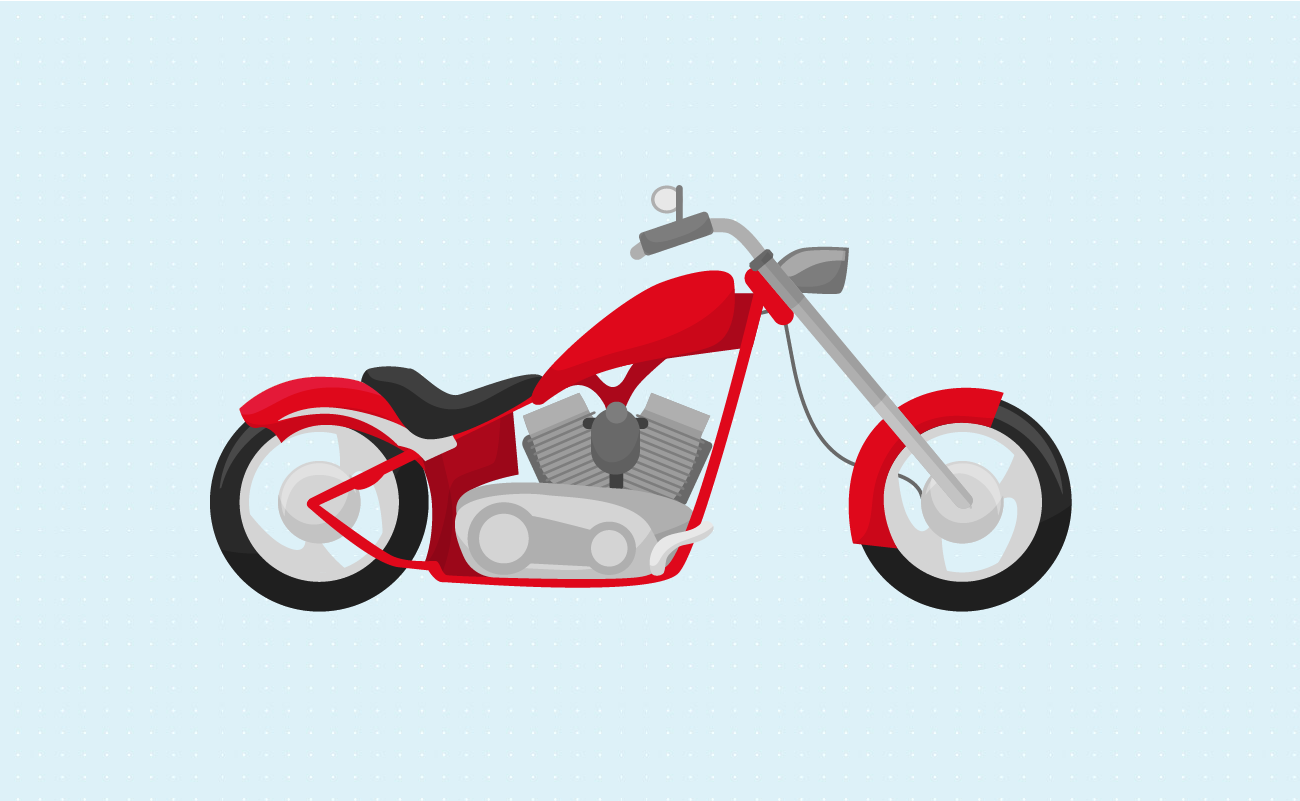
Cruiser motorbikes, also known as choppers, get its name for its purpose. They're specifically built for cruising comfortably during long rides around town or open roads. When you think of a cruiser, the first brand people imagine is the Harley-Davidson for its iconic bike designs. This type of vehicle is suitable for both beginners and experienced motorcyclists.

Cruisers are a good weekend rider that come with a front pouch, a tank bag, or saddle bags for storage. It's designed for a laid-back riding stance with your feet forward and hands in a neutral or high position. However, cruisers do not have large front fairing to deflect wind. This means long-distance rides may not be as smooth as touring motorcycles.
Price: Cruiser motorcycles come in different price points. Some have a market price of $4,300, while others can cost as high as $21,000. Outfitting your cruiser with personalized accessories definitely pushes your expenses higher.
Popular cruisers: Motorcycle resource site Cycle World lists down well-known cruiser motorcycle brands buyers should consider. Some of these popular brands and models include:
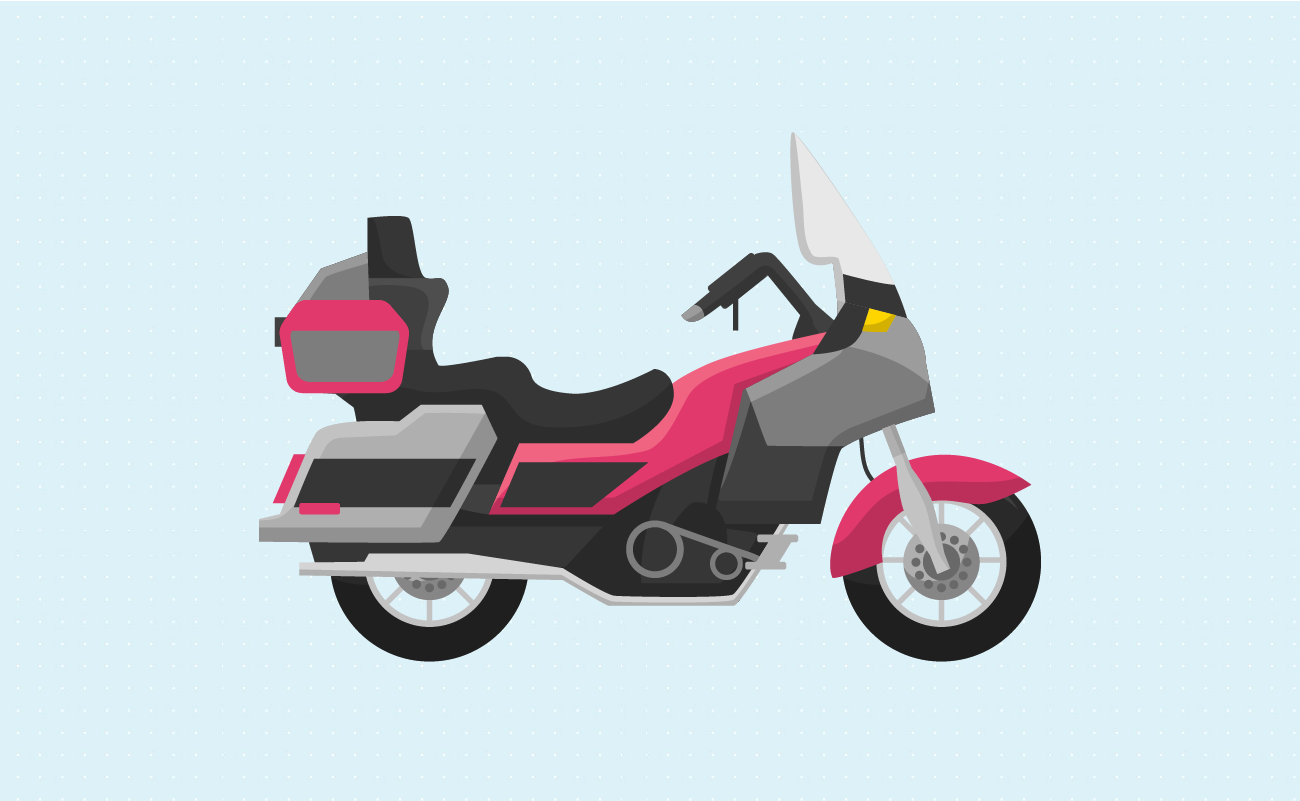
Touring motorcycles are larger bikes with bigger gas tanks designed for long-distance cross-country rides. It's the ideal bike for weekend trips to the coast. Built with reliability and convenience in mind, touring bikes are equipped with more storage space meant for gear and luggage items. They come with different engines, allowing you to start with a 1037cc engine, to a reliable 1833cc engine.

Expect touring bikes to provide a more upright seating position. It keeps arms and legs sturdy for long periods of time, helping maintain full control of the bike. Moreover, touring motorcycles come with large fairings or high windshields that help deflect the wind. Overall, expect a smooth and comfy ride.
Price: Since touring bikes are much larger with more storage features, they have a higher price point compared to standard motorcycles. Touring bikes usually range between $8,400 up to around $44,000.
Popular touring motorcycles: For reviews on the best touring motorcycles, Book Motorcycle Tours compiled a list of popular touring bikes. Some of these brands and models include the following:
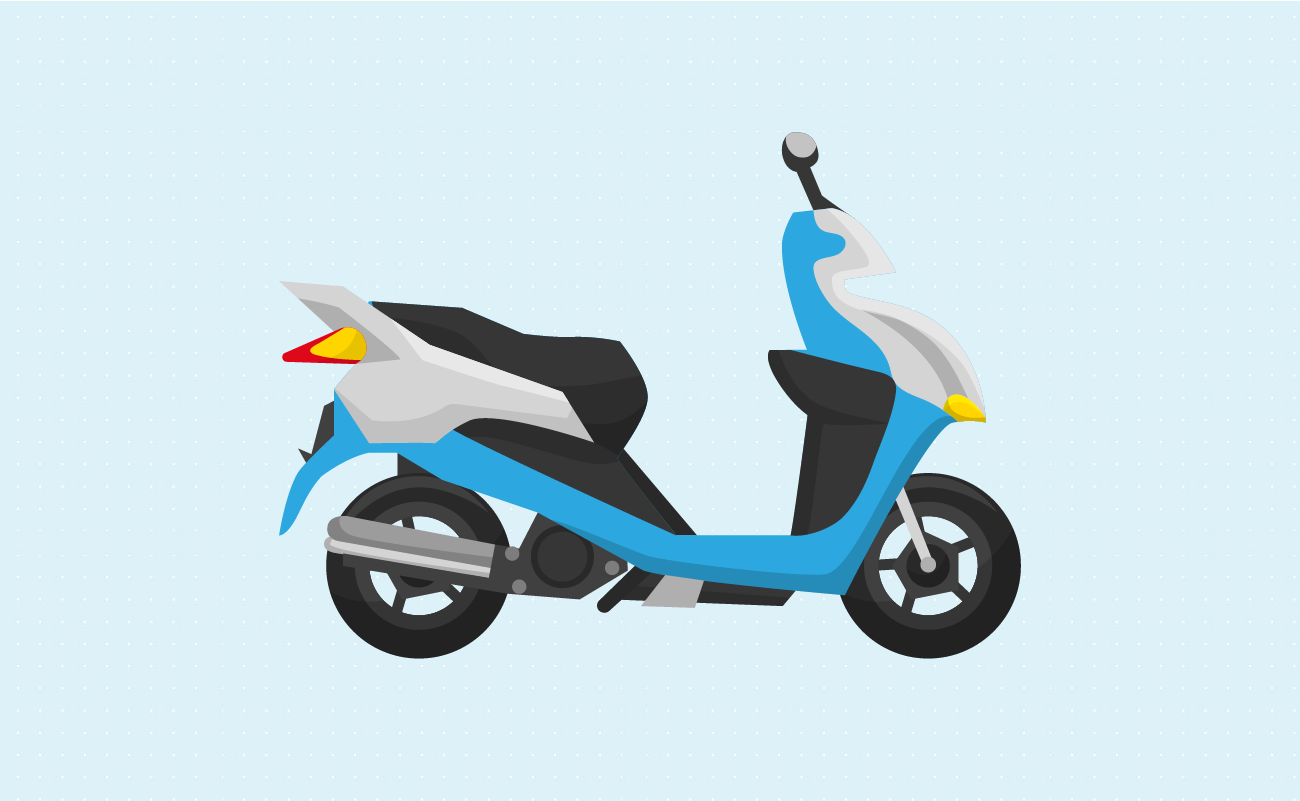
Scooters are motorcycles built for commuting around the city. They are light and typically designed low on the ground. Since they are not large and bulky as other motorbikes, it makes them easier to maneuver around crowded streets. It's the ideal bike for getting around busy cities.
For engine size, scooters generally come with small 50cc engines up to 500cc engines. These bikes also come with storage space, although compartments are not as large as a standard motorbike. Scooters are equipped with a lower fairing for deflecting wind during rides.

Moped motorcycles are a sub-category of a scooter, with vintage moped scooters becoming harder to find around the US. Moped bikes have smaller frames with an engine which is usually smaller at 50cc and below, and with little or no storage. Some moped scooters are also fitted with electric motors instead of an engine.
Price: Scooter prices are generally not as expensive as standard motorcycles or big motorbikes. Basic street scooters can cost less than $1,000. For small yet fuel-efficient scooters, you can find units that sell around $4,200. If you're looking at high-end models with added features, it can cost up to $9,000.
Popular scooters: Motorday summarized a list of some of the best scooters to watch out for if you're looking for a reliable model. Consider the following scooters when you're shopping around:
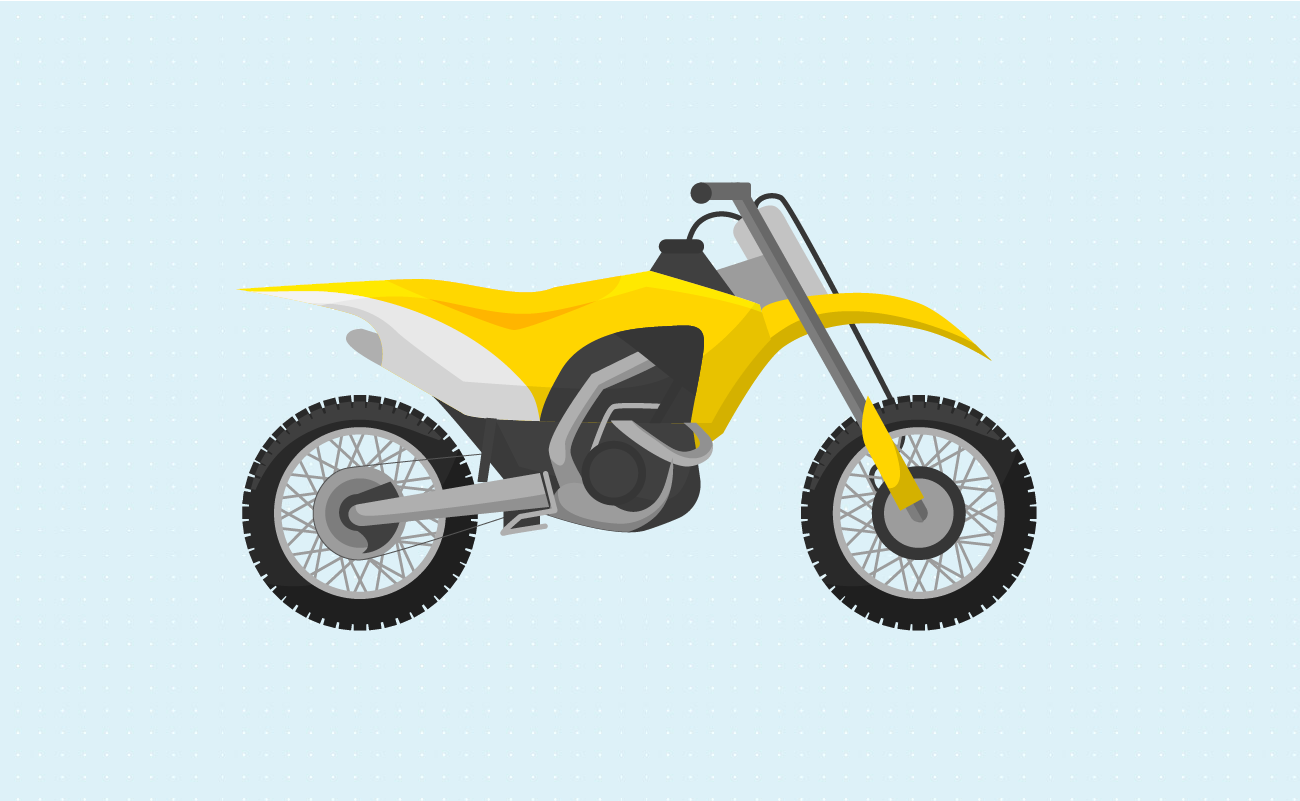
Made for adventurous rides on open trails, off-road motorcycles or dirt bikes are precisely what their name stands for. These bikes are built with higher seats and long travel suspensions to withstand deeper brush and bumpy trails. They are generally light-weight for easier handling along dirt roads, wood trails, and other off-road riding spots. Dirt bike engines typically range from 230cc to 450cc.

In choosing an off-road bike, consider your weight and height. If you think you are heavier than average, engine performance may be an issue. In this case, opt for a larger engine. As for proper seat height, have it adjusted accordingly. A rider should sit on the motorcycle while being able to plant their feet on the ground.
Price: Off-road motorcycles can be quite costly. According to a price guide compiled by Dirtbike Magazine, these bikes usually range from around $3,500 to almost $12,000. If you're interested in owning one, Kawasaki manufactures well-known off-road models for less than $3,000.
Popular off-road bikes: For some of the best off-road motorcycles, Ride Now compiled a list of quality bikes which include the following brands and models:
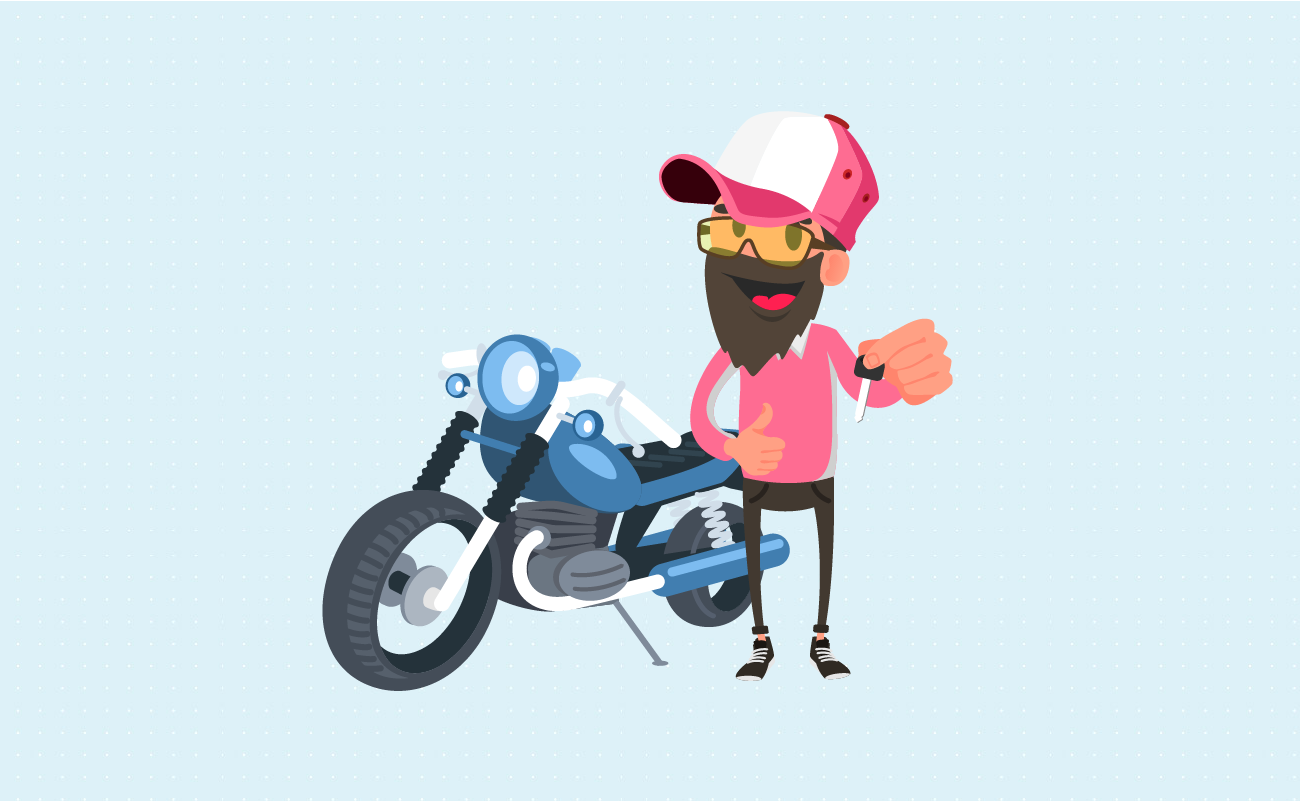
Now that you know about different types of bikes, let's move on to another purchasing issue. It's every buyer's dilemma, especially for beginners: When should you buy a new or used motorbike?
Purchasing a used unit is a good way to save money upfront, since new motorcycles typically cost more. Going through used units can also help you find old models (if you're looking for a specific make) that still runs relatively well for their age.
However, choosing a used unit comes with risks, such as hidden maintenance issues. And though your budget is a major factor in choosing a new or used unit, it ultimately boils down to your personal preferences.
To help you decide, here are several things to consider before buying a new or used motorbike:
| Type | New Motorcycle | Used Motorcycle |
|---|---|---|
| PROS | No mileage history, reduced maintenance Comes with warranty Protection – lemon laws apply Dealers offer financing options Comes with the latest safety features |
Lower price than brand-new models Lower insurance premiums Dealers offer financing options Buying from a dealer helps you take care of repair issues |
| CONS | Typically cost more than used units Higher insurance premium Similar to new cars, they depreciate fast |
Lower resale value Undisclosed history More upkeep, higher maintenance cost Private sellers may require full payment Buying from a private seller entails fixing mechanical problems yourself |
| TIPS | Secure insurance and financing first Compare deals online & in your area Get a pre-purchase inspection Ask for the “out-of-door price” – includes dealer charges, sales tax, title and registration fees. |
Do you need financing? Make sure you have funding Do a thorough background check Get a lower mileage unit Ask for a clean title Make sure there's no damage Get a pre-purchase inspection |
In buying a new motorcycle, make sure to secure financing first before going to a dealer. For people looking to buy a used motorcycle from a private seller, it usually means paying in full. So if you need financing, consider buying from a dealer. Likewise, buying a new motorcycle from a trusted dealer gives you financing opportunities, allowing you to shop for more favorable rates.
Another thing to think about is motorcycle mileage. Most used motorbikes with a range of 10,000-15,000 miles require major repair and maintenance service. This can easily add around $800 to $1,500 on top of the resale price. For instance, if you're looking to purchase a used 2016 Harley-Davidson Dyna Low Rider for $10,500, the total cost could be somewhere between $11,300 to $12,000.
Even with inspection, sometimes used motorcycles can have mechanical issues that you'll have to deal with for the long haul. Purchasing a new unit rids you of chronic problems that might creep up, which means reduced maintenance and higher safety. So if you're using it for a long time, consider purchasing a brand-new unit.
As the only owner, a new motorbike allows you to maintain it well and familiarize yourself with any issues. People also opt for new motorcycles to prioritize reliability as well as new features. For safety features, most motorbikes for beginners have anti-lock breaks, which keep them from falling down. According to Autotrader, having anti-lock brakes alone makes a brand-new motorcycle purchase worth it.
On the other hand, new motorbikes typically come with 12 to 24 months of unlimited mile warranty. Apart from running well and helping you avoid mechanical problems, it's covered by the manufacturer in case of factory defects. However, this is covered only with typical use (which is still better than none). Dealerships won't cover damage due to accidents.
For people who are willing to learn more about motorcycle repair, buying a used unit may not be that bad. Knowing how to do things yourself can save you a lot on maintenance costs. For other experienced riders, they don't mind the risk of buying a second-hand motorbike because they are familiar with making repairs. But if you're more concerned with having a bike that's in good condition (that will save you from stress and costly repairs), then it's a lot better to buy a new unit.
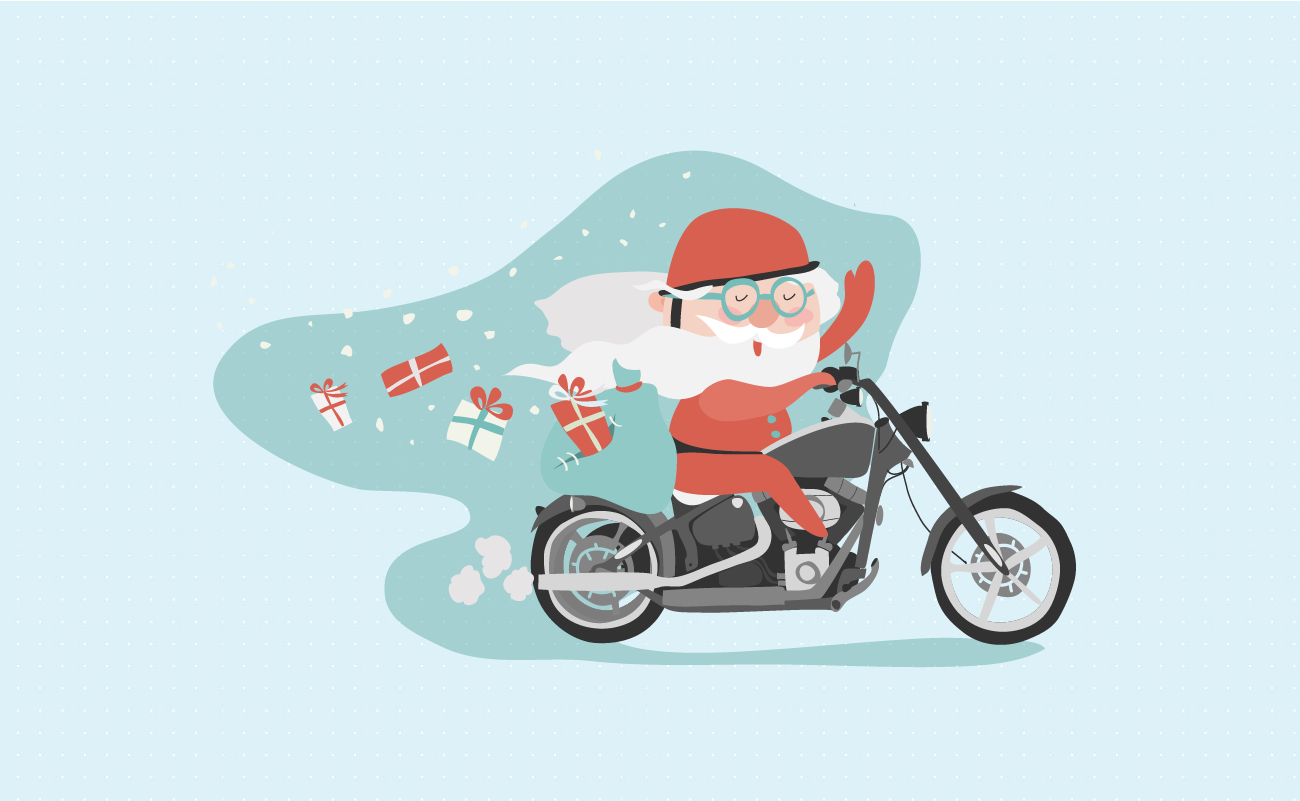
Nothing can be more irritating than purchasing a brand-new motorcycle, only to find that the same model is now on sale. When this happens, professional dealers might give free goods and services, or a bit of cash back. But as consumers, we don't have any real case for getting the same discount.
How can a new buyer avoid this? The key is to know when dealerships will roll out their promos.
According to the Motorbike Writer, promotions are planned months in advance, which means they can be predicted. They also coincide with holidays and special events. There are also last-minute promotions which are held to free up excess units that are not yet sold. So if a new model is about to come out, , wait for a previous model to go on sale.

The best time to get discounts and good deals on motorcycles is during holidays like the Christmas Season, the New Year, and January. Try to go earlier during the day and at the start of the week when there are less people in the dealership.
The best time to buy a motorcycle is during the Christmas season and the New Year, as well as the month of January. It's also good to purchase around September before the end of the financial year. Dealers roll out discounts and favorable rates during spring to encourage people to start riding again.
Even if there are no discounts offered, these periods are still the best times to negotiate better deals. During these times, dealers need to meet sales metrics. Purchases allow them to meet their sales goal, making them more flexible with requests. So don't be afraid to negotiate with your dealer.
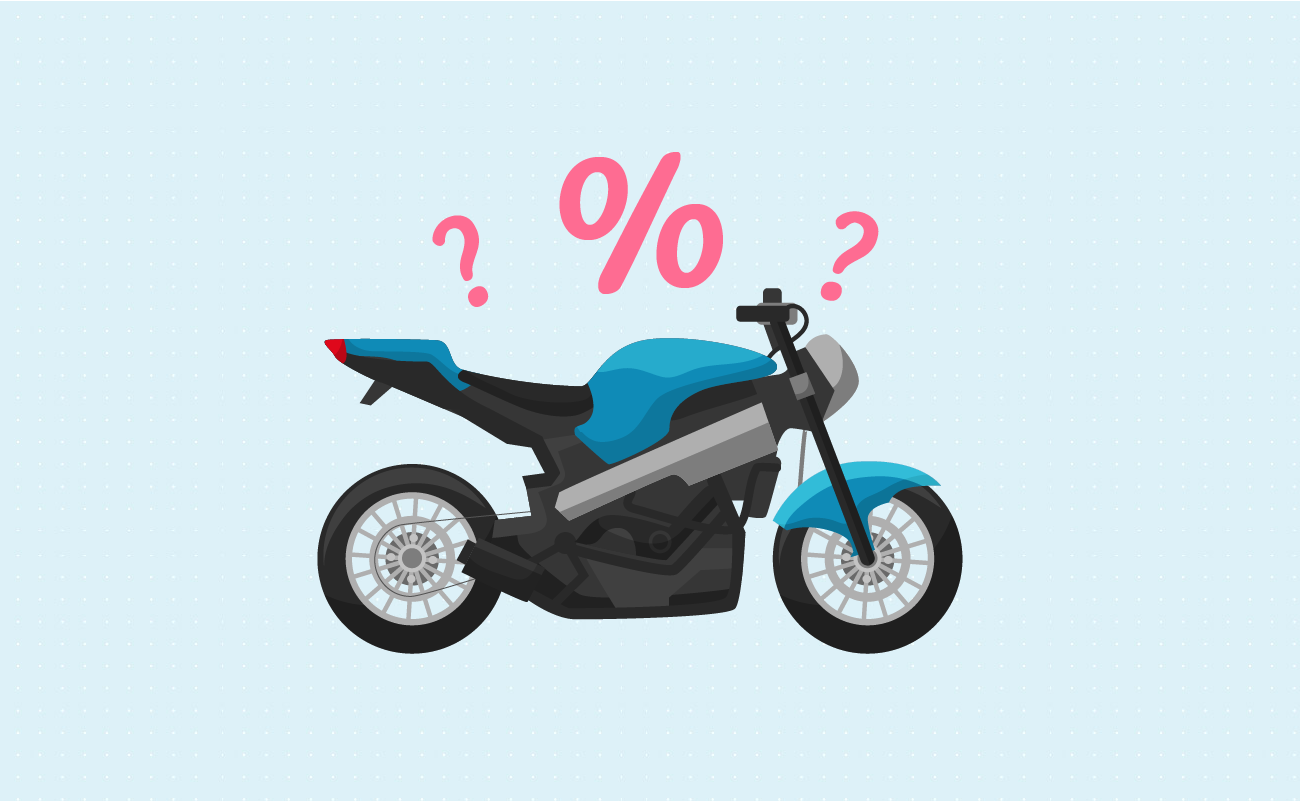
For auto loans, the national average rate in the US is 5.27% on 60-month loans. Rates still rely on your credit score, the age of the vehicle, and other factors related to the financer's risk in lending a car. If you are a prime applicant with a credit score of 760, your interest rate can go as low as 3%. For subprime borrowers with a credit scores under 580, interest rates can be as high as 20%.
As for motorcycle loans, while the process is similar to buying a car, financing options vary. You need to secure a loan specifically for motorcycles, recreational vehicles, or specialty vehicles. In other instances, some buyers take out a personal loan to purchase a motorbike.
A good credit score can get you a motorcycle rate as low as 3.09%. But remember that a low rate may come with short repayment terms. For instance, if you want a low-priced unit and negotiate for a term longer than 36 months, you're likely get a higher rate.
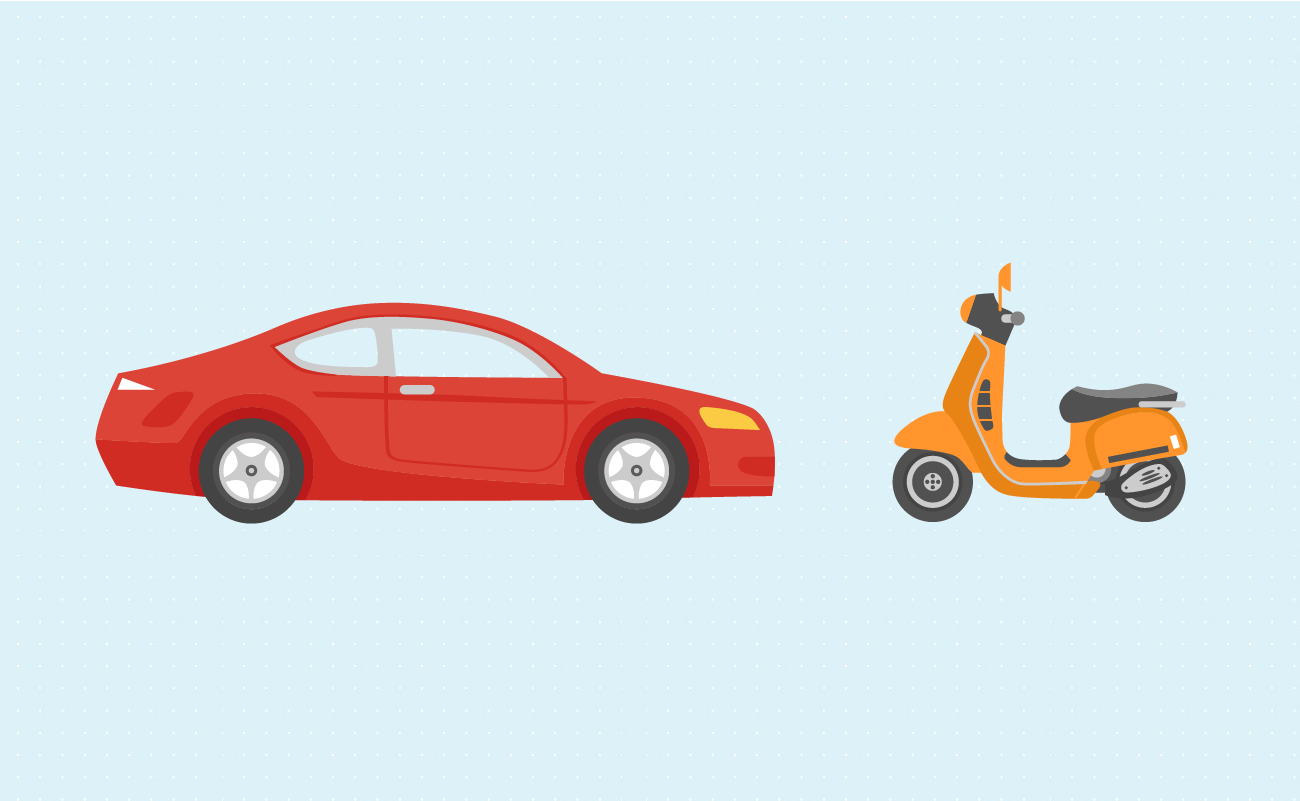
Purchasing a motorcycle is typically more affordable than a car. As of 2019, the average transaction price of a new car is at $37,183 according to Edmunds.com.
As for motorcycles, GQ magazine estimates that beginners spend between $5,000 to $10,000 on a new motorbike. But beyond upfront costs, let's take a look at other factors that influence the long-term cost of using motorcycles versus cars.
According to Huffington post, in 2017, a typical driver spends around $1,560 in to fill up their gas tank in a year. In related news by the Business Insider, data from the USE Energy Information Administration detailed how much the average car driver spends on fuel per state.
The report shows that car owners who lived in rural areas spent around $1,300 on fuel annually, while urban states like New York spent around $623 annually. People who spent less on fuel were likely to use public transport more often in the city, compared to rural states that drive farther to get around.
What about motorcycles? The average motorbike can travel from 120 to 200 miles on a tank of gas, according to Pack up and Ride. Gas tanks vary in size, which means standard bikes have smaller gas tanks, and large cruisers have bigger tanks. Riding conditions such as steep or windy roads may also affect fuel consumption. But you can go pretty far as long as you keep refueling as needed.
According to the Rollick motorcycle guide, the average bike owner rides around 3,000-6,000 miles a year. For instance, if the cost of gas per gallon is at $3, and your bike's average miles per gallon is at 50-60 mpg, your average fuel cost should be somewhere around $180-$300 a year. That's considerably cheaper compared to driving a car annually.
If you intend to take your motorcycle on a long road trip, you'll likely need a spare gas tank. This can cost anywhere between $30 up to $100.
Keeping a car in good condition entails higher cost over time. According to Consumer Reports, data from the 2019 Annual Auto Survey shows how much car owners paid a year for maintenance and repairs. Below are average maintenance costs in a year depending on the age of the vehicle.
| Car age | Maintenance Cost / Year |
|---|---|
| 3 years | $83 |
| 5 years | $200 |
| 10 years | $458 |
For newer cars, maintenance expenditures are low because of free maintenance periods. New cars also need little to no maintenance work in the first few years. Moreover, in the survey, most car warranties were in place for 3 years. Older cars, especially those 10 years , require more repairs. By the 10th year, car owners usually shoulder most of the repairs.
On the other hand, though motorcycles as more fuel efficient, they tend to require more maintenance than cars (even new bikes). This depends on how often you ride and what type of motorcycle you have.

The Rollick guide notes that owners need to prepare themselves for high motorcycle maintenance costs, especially on unexpected repairs. You can perform routine maintenance including oil change and chain checks every 5,000 to 20,000 miles. Give or take, this can easily cost around $1,000 or more a year.
For instance, if your bike needs a valve repair, you might need to pay between $800 to $1,500. For changing tires, the average biker should change them every 3,000 to 6,000 miles. New tires can cost around $400 to $600. But with a brand-new bike, it can cost less with warranties in place, but it's still pricey.
Between 2017 to 2019, Business Insider reported that the average cost for auto insurance was around $1,566 per year. Insurance packages very, and this depends on which state you live in, the coverage you need, your credit history, driving history, gender and age.
Meanwhile, motorcycle insurance also depends on your credit history, your age, where you live, and the extent of your coverage. According to the Rollick guide, a typical motorcycle insurance costs between $200 to $500 per. That's significantly more affordable than auto insurance.

Just like driving a car, riding your motorbike through the snow and harsh weather can be hazardous. Aside from slipping on icy roads, it can mean serious mechanical issues when temperatures drop to zero. To familiarize yourself with winter riding, here are a few pointers to prepare you for winter rides:
The right gear helps prevent injury and road rash. It also maintains your body heat to keep you from freezing under inclement weather conditions. A great way to stay warm is by wearing heated gloves, jacket liners, or pants thermal sensors. These can be charged ahead of time, with long battery life. Some heated gear is also made with water-resistant material.
The worst thing that can happen is get stranded in the cold while with a dead motorbike. Before the winter comes, get in touch with a professional towing service and repair shop. Even if you consider yourself a good mechanic, it's still better to get help especially in rough weather conditions. Another great idea is to join the American Motorcyclist Association. This group can give you reliable roadside assistance in times of emergency.
When tires get cold, this results in significantly less traction. Once they lose traction, you can't maneuver your bike with the same precision and speed. This is why you must ride more slowly on icy roads. Unless you have special tires for winter cruising, it's a lot trickier to ride through snow. So keep your tires in good condition. Check your tire pressure and make sure it's free from punctures. If your tires are getting bald, change to new ones before the winter comes. You'll be glad you did.
Cold weather can really strain your engine. This is why it takes time to start a motorcycle in a really cold day. To avoid this, change your oil and filter before going out for a winter ride. Quality engine oil lubricates and protects the engine's moving parts. Some riders occasionally spray a little starter fluid on their engine's air intake valve to minimize ignition strain.
Salt on the road can stick to your bike for weeks. This can seriously rust and damage your wheels and undercarriage. You can prevent this by hosing your bike after your ride. For thorough cleaning, you can hose and wipe away dirt every two weeks.
Anti-rust corrosion spray helps prevent vulnerable surfaces from further damage. This is applied after routine cleaning to keep it looking new. The spray acts as a barrier which keeps water, snow, and harsh winds from eroding exposed parts. These includes the pedal sockets, brake discs, and undercarriage. Regular application after cleaning will help maintain your motorcycle's surface condition.
Freezing temperatures can also take a toll on batteries. Make sure to do regular battery checks to know if it has the right voltage range. A motorcycle battery in good condition should be over 12. 6v. If it has low power, charge your batteries to prepare it for the next ride. If your battery drains fast, consider changing it.
Keeping your motorbike indoors will lessen the effect of cold temperature on your engine and batteries. Parking it inside also help prevent moving parts from seizing, and metal surfaces from corroding fast. If you cannot store your motorcycle indoors, invest in a quality bike cover to protect your bike from harsh weather.
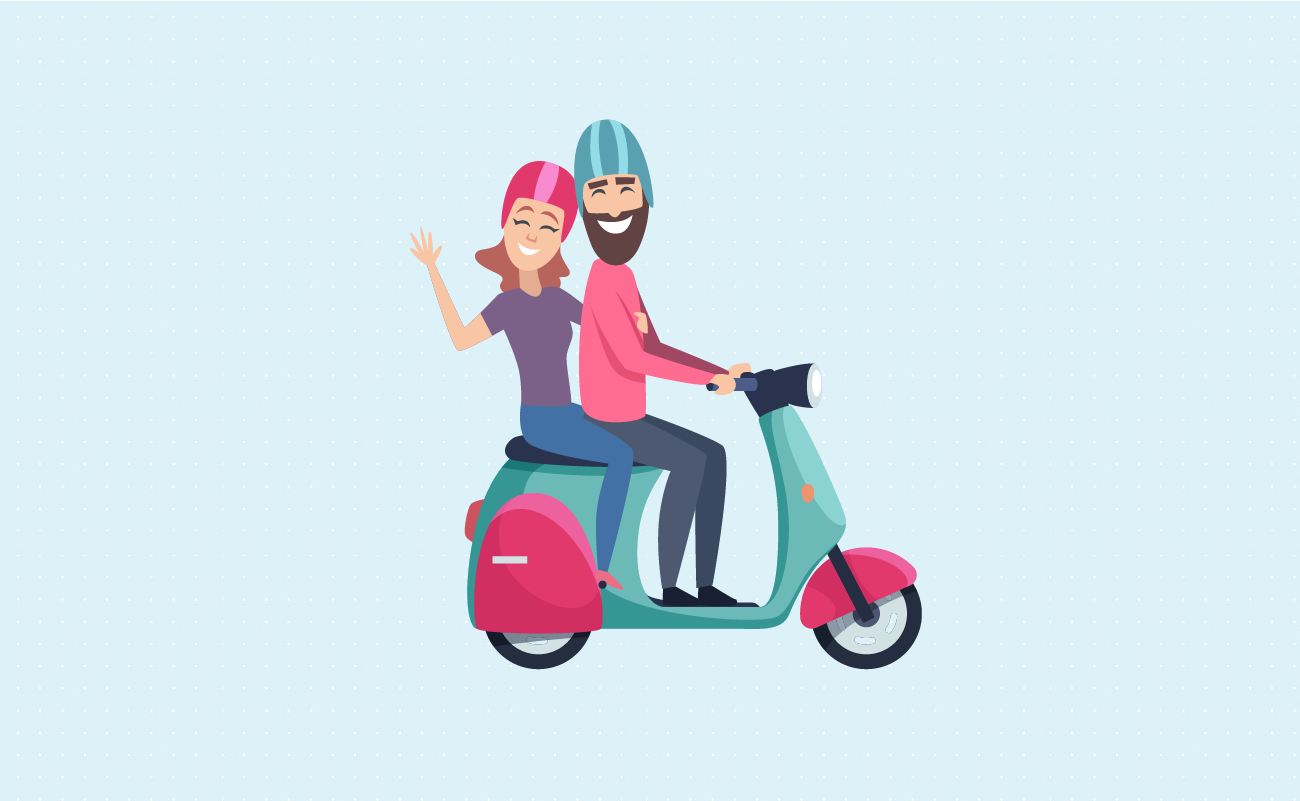
Purchasing your own motorcycle is a personal milestone. With so many types of motorbikes out there, including brand-new and used units, it can be difficult to choose one. It helps to remember why you're buying it in the first place: is it for recreation or commuting in the city? Put your priorities first.
Finally, once you've have your motorcycle, it's worth learning how to do basic maintenance and repairs. Since motorcycles require more maintenance than cars, doing some of it yourself can help save repair costs each year.
Need help computing your car loan? Use our auto loan calculator.
Jose Abuyuan is a web content writer, fictionist, and digital artist hailing from Las Piñas City. He is a graduate of Communication and Media Studies at San Beda College Alabang, who took his internship in the weekly news magazine the Philippines Graphic. He has authored works professionally for over a decade.